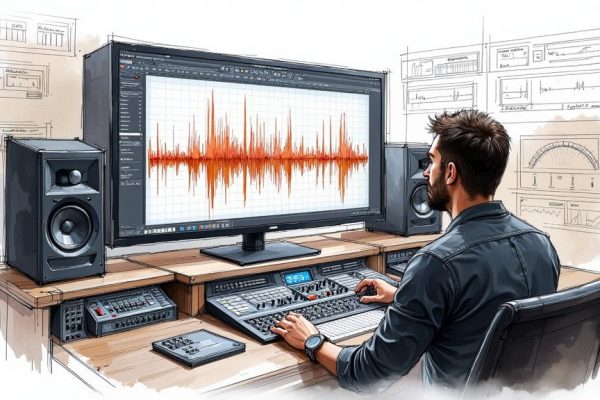
4. T1E4 - No me hagas pensar o el uso (a veces chungo) de la sobrecarga cognitiva en marketing
Scientific Copywriting

Presentado por
Pedro y Patricio
La probabilidad de que Patricio empiece un taller de copywriting hablando de la sobrecarga cognitiva tiende a 1.
¿Para agobiar al personal y acabar antes? Podría ser.
Pedro nos explica de dónde sale este mecanismo qué explica casi todas nuestras decisiones y muchas de las buenas prácticas de redacción que seguimos sin pensar.
Y no siempre es como se dice.
¿Quién anda por ahí?
- Pedro Margolles, psicólogo cognitivo y doctor en neurociencia cognitiva del lenguaje. Consultor y formador de #behavioral design, #neuromarketing y analítica de datos.
- Patricio Fdez., el redactor en prácticas. Lleva una temporada haciendo #copywriting para empresas B2B. Ahora anda muy metido en aplicaciones de la #IA para #marketing.
Por si quieres más, aparte de suscribirte al canal:
Nuestras newsletters:
https://prodestcopy.com/suscribete
Nuestros Linkedines:
https://www.linkedin.com/in/pedromargolles/
https://www.linkedin.com/in/patricio-fernandez-b2b-copywriter/
Los apuntes del doctor Margolles:
Cowan, N., Morey, C., & Chen, Z. (2007). The legend of the magical number seven. Tall tales about the brain: Things we think we know about the mind, but ain’t so, ed. S. Della Sala, 45-59. ISO 690 https://books.google.es/books?hl=es&lr=&id=x_VQEAAAQBAJ&oi=fnd&pg=PA45&dq=miller+magical+number+seven&ots=gi3tn-kv9X&sig=cSHnr_kq3VWt3YPWVBpxqCTIgh8&redir_esc=y#v=onepage&q=miller%20magical%20number%20seven&f=false
Wagoner, B. (2015, August). Qualitative experiments in psychology: The case of Frederic Bartlett's methodology. In Forum Qualitative Sozialforschung/Forum: Qualitative Social Research (Vol. 16, No. 3). https://www.qualitative-research.net/index.php/fqs/article/download/2367/3871
Wu, T., Dufford, A. J., Egan, L. J., Mackie, M. A., Chen, C., Yuan, C., ... & Fan, J. (2018). Hick–Hyman law is mediated by the cognitive control network in the brain. Cerebral Cortex, 28(7), 2267-2282. https://academic.oup.com/cercor/article/28/7/2267/3836954
Antonenko, P., Paas, F., Grabner, R., & Van Gog, T. (2010). Using electroencephalography to measure cognitive load. Educational psychology review, 22, 425-438. ISO 690. https://www.researchgate.net/profile/Pavlo-pasha-Antonenko-2/publication/226300470_Using_Electroencephalography_to_Measure_Cognitive_Load/links/54a735ae0cf256bf8bb6bb80/Using-Electroencephalography-to-Measure-Cognitive-Load.pdf
Créditos:
Music from #Uppbeat (free for Creators!): https://uppbeat.io/t/soundroll/fuzz-buzz
License code: DIO7HXJL7QLWPYZY
Otros episodios
Otros episodios de Negocios que te pueden gustar
Últimos episodios publicados en Mumbler
Últimas publicaciones del blog
The true importance of Cross-Promotion: multiply your podcast audience without spending on ads
The biggest challenge for any podcaster today isn’t creating good content, but...Leer más
8 Best Podcast Hosting Services in 2025: Comparison and Ultimate Guide
El podcasting es una de las formas de comunicación y entretenimiento más popul...Leer más
Podcast production costs: what are they?
Creating content comes at a high cost. It requires time, resources, tools, and...Leer más
Master StreamYard: The complete guide to professional live streaming
StreamYard StreamYard is a live streaming platform that works directly from yo...Leer más
Podfade: What it is and how to avoid it
Podcasting is an exciting and rewarding medium, but many creators face a commo...Leer más
How to normalize audio: professional techniques and step-by-step guide
Understanding audio normalization is essential for achieving balanced and prof...Leer más





